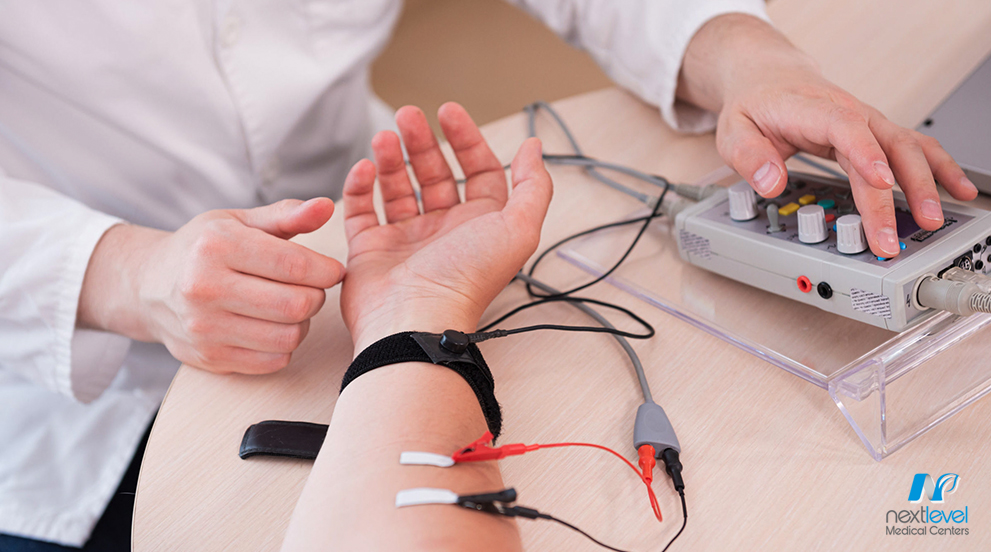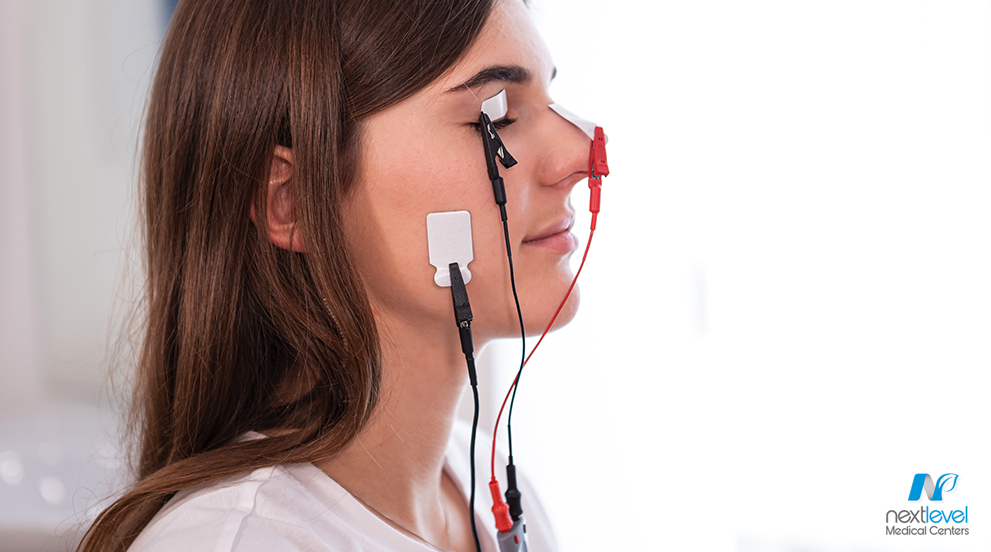

The human body is connected on the most fundamental level, where one part of our body can profoundly affect another. The anatomy of the human body is extremely complex, and we are still learning more about human physiology than was ever thought possible in the past. Medical science has advanced to a point where we understand more about the human nervous system than ever before, and we can use that knowledge to improve the human condition. These studies have brought about a new evaluation for nerve issues known as nerve conduction studies. However, you might wonder what nerve conduction studies mean for your care.
While nerve conduction studies might not be a familiar medical practice to you, the overall concept is simpler than most imagine. Fortunately, it is possible to assess the concept through its main focus of nerve analysis. The more you understand about these studies, the easier it will be to seek them out for your health needs. This article will focus on bringing the information about nerve analysis to light so you can better understand the goals and effects of nerve conduction studies.
Nerve conduction study is a layman’s term for a nerve conduction velocity test. A nerve conduction velocity test is a procedure to measure the speed at which electrical impulses traverse your nervous system. These electrical impulses are fundamental to our bodily functions; without them, our brains cannot signal our bodies to do anything.
Ordinarily, these electrical impulses can traverse the entirety of our nervous system and enable our bodies to function properly. Unfortunately, certain injuries can interfere with these signals and disrupt bodily functions. This is why nerve conduction velocity tests have become essential to nerve health.

These tests can determine if there has been any nerve damage in our bodies that could interfere with our body’s electrical impulses. Undergoing a nerve conduction study can make nerve damage easier to detect through modern medical appliances. The studies will identify the issues with your nervous system so you can begin the recovery process and try to restore your body’s functionality.
That said, you are probably more curious about how these studies work and how they can detect nerve damage. This curiosity is extremely reasonable, and we are happy to offer some insight into how these tests work.
While a general understanding of nerve conduction studies is important for our needs, knowing how to administer them is just as important. A standard nerve conduction velocity test involves using electrodes applied to the skin designed to perform one of two tasks. The first electrode is placed to stimulate your nerves with a mild electrical impulse. At the same time, the second electrode records the process to evaluate the speed at which the impulse traverses your nervous system.
These electrodes are used on every nerve being tested in your session as they permit the physician administering the procedure to measure potential nerve damage. They check the time it takes for the electrical impulse to travel from the first electrode to the second. If the impulse takes too long to reach the second electrode, it can indicate that you have suffered nerve damage.

The actual process used to administer a nerve conduction velocity test is as follows:
While nerve conduction velocity tests might sound intimidating, they are extremely simple procedures that will not disrupt your day. After the test is complete, you can go about your day normally unless your healthcare provider recommends otherwise. However, this is unlikely to be the case since the test does not cause exhaustion or require any medication that can interfere with activities. Your physician might need some time to assess the test results, but you should have them promptly.
This essentially covers the entirety of what a nerve conduction test is like and how they work. However, knowing how the tests work and how to prepare for yours are entirely different. While the tests are not overly demanding, you might need to prepare before the test, depending on your circumstances.
Preparing for a nerve conduction velocity test will not always be necessary, and you will likely be briefed on the situation by your physician before your session. You will also be given a form to read over that you can ask questions about before you sign. However, you might want to know what you are in for before making your appointment—an understandable and practical mindset for those unsure about how these procedures work. Anyone looking to undergo any procedure is used to some pre-appointment preparation, including having to fast.

When preparing for a nerve conduction velocity test, there is very little preparation that needs to be done. Unlike major surgeries, you do not have to fast or be sedated before the test is conducted. However, your health situation might cause your physician to impose additional preparation to avoid causing problems. Otherwise, the only preparation you should have to worry about is:
As we said, there might be a few other steps you will need to take, depending on your current health. However, you will likely only need to worry about these specific restrictions if you are in decent health. However, being in decent health might make you wonder why you need a nerve conduction velocity test. The reason is likely to help identify any potential health issues you might have that affect your nervous system. The question is, what conditions are those?
While nerve conduction tests are generally used to identify nerve damage, they can be equally important in identifying where the damage originated. Several overarching health conditions can cause nerve damage. A large portion of these conditions can be detected through nerve conduction tests, so you can begin treating them before they cause permanent complications. While not every condition can be detected through nerve conduction tests, a few major conditions are easily discernable through the process.

Some of the most devastating conditions that a nerve conduction test can identify are:
Each nerve-damaging condition can be detected by nerve conduction testing since the impact on your nerves prevents the impulses from traveling properly. Other factors help physicians identify these conditions, but ultimately, a nerve conduction test could easily point out these issues before it is too late. The sooner you can treat these conditions, the better your chance of recovering from them. Waiting too long can lead to permanent damage that massively affects your quality of life.
Of course, we know that medical procedures and tests can be associated with risks. When dealing with a process you have never experienced, it is reasonable to want information on the potential risks, even for nerve conduction tests.
Wanting to know all the potential risks involved in your medical treatment is not only reasonable but crucial. After all, going into any procedure blind can have serious consequences you were unprepared for. Fortunately, most hospitals and clinics are legally obligated to outline the risks before administering the procedure as a matter of liability. However, wanting to know the risks before you consult with a physician is usually a good idea. Fortunately, there are almost no risks associated with nerve conduction studies.

The electrical pulse used in the tests is a low voltage, meaning there is virtually no risk associated with the pulse itself. However, there might be more risks depending on your health situation, as certain diseases and conditions could increase the risk associated with these tests. For example, you must tell the physician if you have a pacemaker installed as even a low voltage could compromise the device and cause cardiovascular health concerns.
Aside from preexisting conditions causing complications, a nerve conduction test is remarkably safe and should not pose a concern to you. This means the only concern you should have left is finding a facility to administer the test for you.
Nerve conduction tests are not commonly discussed in your standard doctor’s visit. So, being curious about what they are and how they work is completely understandable. The tests can help you identify and address nerve damage and the conditions that caused it, meaning you can take steps to preserve your health. However, knowing what nerve conduction tests are and where you can go to have one performed are different things altogether. Fortunately, there is a solution to that problem.

We at Ortho Integrative offer various physical health treatments, ranging from massage therapy to electrode testing. Our staff consists of licensed medical professionals able to administer the treatments you need when you need them. Nerve conduction tests are among the services we can provide so you can live the healthiest life possible without fear of damaging nerve issues. So, if you are interested in nerve conduction therapy or any other physical health treatment, visit our website today so you can take your health to the Next Level!
After reading today’s article on nerve conduction studies, do you have any questions or concerns about it? Was there anything that we mentioned about the procedure that you’d like additional explanation on? If so, we’re only a message away, and we’d love to assist you however possible!